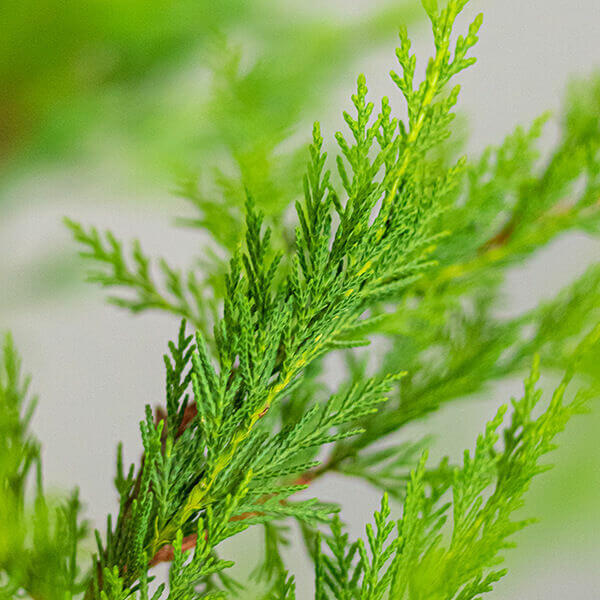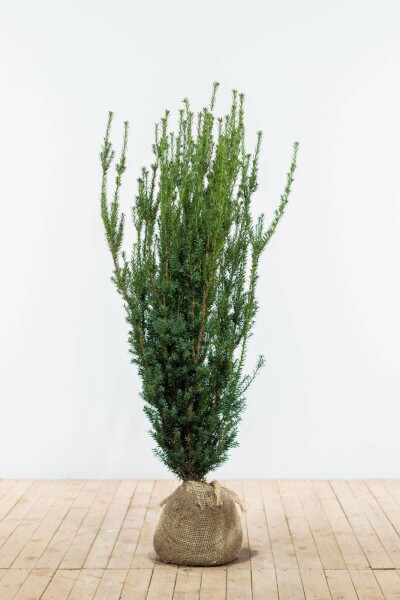Hedge Plants For Formal Gardens
Hedge Plants For Formal Gardens
Blog Article
Hedge Plants For Minimal Pruning
Enhance your garden's appeal with rich hedge ranges such as Yew (Taxus), Thuja, Laurel, Photinia, and Bamboo, commemorated for their structural integrity and ecological advantages.
Yew and Thuja provide evergreen protection and winter season durability, while Laurel uses rapid growth and broad, fragrant leaves.
Photinia includes seasonal charm with its dynamic red foliage, and Bamboo provides a low-maintenance, tranquil ambiance.
These hedges enhance air quality, lower noise, and produce tranquil, personal areas.
Proper planting, spacing, and upkeep make sure vigorous growth and environmental consistency.
Explore how these lush varieties can raise your garden's appeal and wellness.
Secret Takeaways
Transform Your Garden With Lush Hedge Varieties
- Select Yew for its thick, evergreen development and unparalleled longevity.
- Select Laurel for its quick development and broad leaves, making sure fast privacy.
- Pick Photinia for its lively seasonal foliage, which turns a striking dark red.
- Utilize Bamboo for a low-maintenance, winter-hardy hedge with aesthetic appeal.
- Space plants 2-3 per meter and prune regularly for ideal development and health.
Popular Hedge Plants
When changing a garden with lavish hedge ranges, it's necessary to think about popular hedge plants such as Yew, Thuja, Laurel, and Photinia due to their distinct attributes and advantages.
Yew (Taxus) is extremely esteemed for its longevity and dense, green growth, making it a prime choice for sustaining landscapes.
Thuja is noted for its evergreen foliage and robust winter resilience.
Photinia includes seasonal vibrancy with red leaves that darken over time, developing vibrant visual appeal.
Laurel uses rapid growth and aromatic, broad leaves, ideal for fast personal privacy.
Additionally, Bamboo is an exceptional option for atmosphere, providing a low-maintenance, winter-hardy choice that enhances the garden's aesthetic with its classy, swaying walking sticks.
These selections accommodate a variety of horticultural requirements and choices.
Advantages of Garden Hedges
Garden hedges offer a wide range of benefits, making them a valuable addition to any landscape. These natural barriers are cost-effective to carry out and supply considerable wind security, enhancing air blood circulation and contributing to noise reduction. The dense foliage of hedges like Thuja and Beech ensures personal privacy by blocking visibility, creating a tranquil and secluded environment.
Hedges likewise play an essential function in microclimate policy, providing a steady environment that promotes plant development and lessens temperature changes. Their intricate leaf structures filter toxins, improving air quality and adding to a much healthier garden environment.
Moreover, hedges stand out in noise decrease, absorbing and deflecting acoustic waves to lower ambient noise levels. This dual functionality of providing both acoustic and visual personal privacy improves the overall harmony and visual appeal of any garden.
Planting and Upkeep Tips
For an effective hedge, meticulous preparation of the planting location is essential. Make sure the soil has appropriate pH and drain to support strong root development.
Area the plants properly for the chosen species. Water the hedge regularly during its preliminary development phase, changing as needed with seasonal changes.
Execute a organized insect control and illness prevention method, using chemical or natural treatments when required. Routinely check for aphids, termites, and fungal infections.
Apply mulch to maintain moisture and suppress weeds. Seasonal pruning promotes dense development and air blood circulation, essential for plant health.
Following these guidelines will help you cultivate a vibrant, well-kept hedge that boosts the appeal of your garden.
Spacing and Cutting Standards
Spacing and Cutting Standards
Correct spacing and cutting are crucial for cultivating healthy, visually appealing hedges. Adequate spacing ensures each plant receives sufficient nutrients, light, and airflow.
Follow these guidelines for ideal hedge upkeep:
- Spacing: Position hedge plants 2-3 plants per meter to motivate robust development.
- Pruning Methods: Routine pruning is vital for preserving preferred hedge height and shape. Trim new growth in summer season and cut back older wood during winter.
- Seasonal Care: Change cutting schedules and approaches according to seasonal requirements to guarantee plant health.
- Hedge Height: Routinely monitor and trim to preserve the wanted hedge height and attain consistent aesthetic appeals.
Following these actions will ensure your hedge thrives, enhancing both the appeal and performance of your garden.
Selecting the Right Hedge
Selecting the Right Hedge
Selecting the proper hedge involves evaluating elements such as fully grown height, foliage density, and environmental resilience. Successful hedge plant choice needs understanding each types' growth characteristics and site-specific flexibility.
For example, Yew (Taxus) offers outstanding longevity and dense development, while Thuja is notable for its winter season durability. Additionally, thinking about maintenance requirements is vital; fast-growing species like Laurel or Privet need regular cutting, whereas low-maintenance choices like Bamboo or Ivy may be more suitable for those looking for minimal maintenance.
Environmental elements such as soil type, light availability, and wetness conditions need to also assist the selection procedure. This careful method makes sure the chosen hedges will prosper, providing both aesthetic and practical benefits to the garden landscape.
Shipment and Planting Advice
To guarantee your hedge plants grow, they should be provided by specialized carriers and planted quickly upon arrival.
Follow these vital actions for successful planting:
- Soil Preparation: Enhance the soil with natural matter to improve drainage and nutrient material.
- Planting Depth: Develop a trench two times the width and equal to the depth of the root ball.
- Watering Methods: Water completely after planting, keeping the soil regularly wet however not saturated.
- Mulching: Use a layer of mulch to maintain moisture and reduce weeds.
Customer Support and Service
Provided the important function of prompt assistance in horticultural pursuits, our customer support team is offered 6 days a week through telephone, e-mail, and social networks to use expert guidance and swiftly deal with any concerns. Their commitment to quick reaction times guarantees client fulfillment by solving questions connected to plant health, optimal planting approaches, and upkeep schedules.

Telephone
Within 48 hours
This comprehensive support system, strengthened by an outstanding 9.3/ 10 consumer ranking, highlights our dedication to enhancing the gardening experience for every client.
Frequently Asked Questions
How Long Does It Take for Hedge Plants to Establish?
Hedge plants typically require one to three years to end up being totally developed, with the specific period differing by types and growing conditions.
Efficient care during this crucial period is important for robust growth. Consistent watering, vigilant weed control, and appropriate fertilizer application are essential in promoting strong root advancement.
For instance, fast-growing species like Laurel may establish faster, while slower-growing ranges such as Yew may take longer. Thorough upkeep speeds up the establishment process, resulting in dense and healthy hedges.
What Are the Finest Hedge Plants for Privacy?
The question of the finest hedge plants for personal privacy includes assessing evergreen and deciduous options.
Evergreen hedges like Thuja, Laurel, and Cypress supply year-round coverage, making sure constant privacy.
In contrast, deciduous hedges such as Beech offer seasonal personal privacy, shedding leaves in chillier months.
Key upkeep ideas for privacy hedges consist of regular trimming, fertilizing in spring, and correct spacing-- typically 2 to 3 plants per meter.
Additionally, constant watering and persistent weed removal are vital for promoting healthy, thick growth.
Can Hedge Plants Bring In Wildlife to My Garden?
Yes, hedge plants can draw in wildlife to your garden by supplying vital benefits like shelter, food, and nesting websites, thus improving local biodiversity. Yew, holly, and laurel are exceptional for drawing in birds, while ivy supports a range of bugs.
However, it is necessary to note that there are some disadvantages, such as increased maintenance to manage bugs and regular maintenance. Thoroughly selecting and keeping hedge ranges can assist balance these disadvantages and advantages, ultimately promoting a lively and sustainable community in your garden.
Exist Any Flowering Hedge Plants Available?
Yes, there are flowering hedge plants offered that can boost the beauty of your garden.
For example, Elaeagnus, likewise understood as Olive Willow, produces fragrant white flowers in the fall, adding a touch of sophistication.
Photinia, another popular choice, showcases dynamic red leaves that grow into an abundant green, creating a dynamic visual impact throughout the seasons.
To make sure these plants grow, it's vital to practice appropriate pruning methods and seasonal upkeep, such as cutting brand-new development in the summer and cutting back in the winter.
These steps will help maintain the health and aesthetic appeal of your blooming hedges.
How Do I Avoid Bugs in My Hedge Plants?
To avoid bugs in hedge plants, use natural bug control approaches and keep correct hedge care. Present beneficial insects like ladybugs, which prey on harmful bugs, to develop a well balanced environment.
Frequently check your hedges for indications of problem and promptly remove any afflicted parts to avoid the spread. Make sure the health of your hedges by using well balanced fertilizers and offering adequate water.
Utilize mulching to retain soil wetness and correct spacing to minimize plant stress and promote robust growth. These practices jointly assist in reducing pest issues and keeping a healthy hedge.
Conclusion
In essence, choosing the right hedge ranges such as Yew, Thuja, and Laurel can change any garden into a relaxing haven. These plants supply year-round plant, improve aesthetic appeal, Additional info and deal practical benefits like sound reduction and wind defense.
Appropriate planting methods, precise spacing, constant watering, and seasonal trimming are essential for ideal development.
Trustworthy delivery services and expert consumer support make sure a seamless experience from purchase to planting, making it easier than ever to elevate your outside space.
Garden hedges offer a wide variety of benefits, making them an important addition to any landscape. These natural barriers are affordable to carry out and offer substantial wind security, boosting air circulation and contributing to noise reduction. The thick foliage of hedges like Thuja and Beech guarantees privacy by blocking presence, producing a tranquil and remote environment.

Pruning Techniques: Regular pruning is essential for keeping preferred hedge height and shape. Trim brand-new development in summertime and cut back older wood throughout winter season.
Report this page